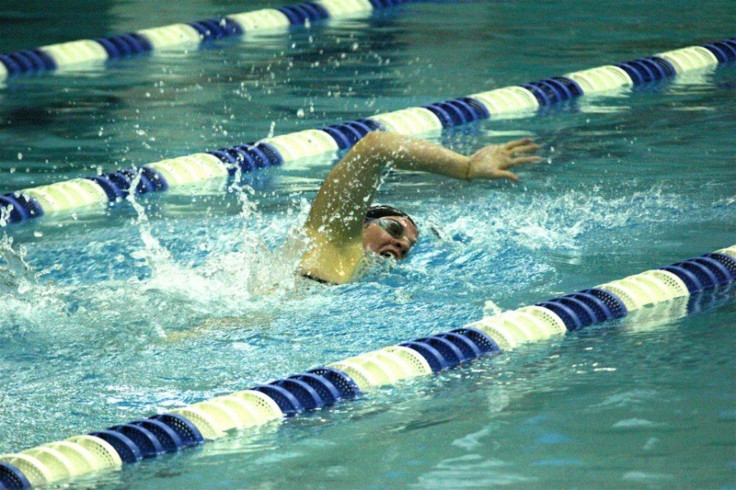Popular Olympic Swimming Stroke Technique Might Not Be Most Hydrodynamic: Study

Michael Phelps will face off against Ryan Locthe in the 400-meter individual medley (IM) at the U.S. Olympic Swimming Trials on Monday night, reigniting a rivalry that began four years ago as both swimmers aim for the London games this summer.
Phelps, who has 14 Olympic gold medals under his built, currently holds the world record in the 400-meter IM from his stellar performance in Beijing, where he butterflied, backstroked, breaststroked and freestyled to win the race in 4:03.84.
The global swimming authority Fédération Internationale de Natation (FINA) stipulates that swimmers can use any method they like in freestyle events, but the near-universal choice is front crawl, which has come to be commonly known as the freestyle stroke.
Phelps had been experimenting with a new kind of freestyle stroke shortly after the Beijing Olympics. In the straight-arm technique, the swimmer moves the arm that's not pulling through the water in a windmill-like fashion instead of bending it at the elbow. The technique, mostly favored by sprinters, has a faster turnover but requires a lot more muscle to sustain, and Phelps dropped it in July 2009, calling it frustrating.
However, there are other variations of freestyle that focus on the other half of the stroke: the pull-through once a swimmer's hand enters the water. The more commonly used method is the sculling method, in which the swimmer's arm is bent at the elbow and moves in an S-shaped curve alongside the body.
Deep catch is a more paddle-like method, where the swimmer's forearm is held straighter throughout the pull with the palm held perpendicular to the bottom of the pool.
A new study from George Washington University and Johns Hopkins University engineers, soon to be published in the Journal of Biomechanical Engineering, compared the two styles by examining high-resolution images and underwater video of elite swimmers and came to a surprising conclusion: the deep catch method is a more effective stroke.
The sculling motion reduces both the lift and drag forces that contribute to thrusting the swimmer through the water. Deep catch, on the other hand, relies on drag-based propulsion like the paddle of a canoe; the swimmer draws water back and water draws him forward.
Sculling, in my view, is a swimming stroke that is based on an incomplete understanding of fluid mechanics, senior author Rajat Mittal said in a statement.
When a swimmer is as experienced as Phelps or Lochte, changing their stroke dramatically from what they're used to probably isn't feasible. But if younger swimmers find that the deep catch does wonders for them, Phelps' many records might not stand for very long.
SOURCE: Loebbecke et al. Comparative Analysis of Thrust Production for Distinct Arm-Pull Styles in Competitive Swimming. Journal of Biomechanical Engineering, in press.
© Copyright IBTimes 2024. All rights reserved.











